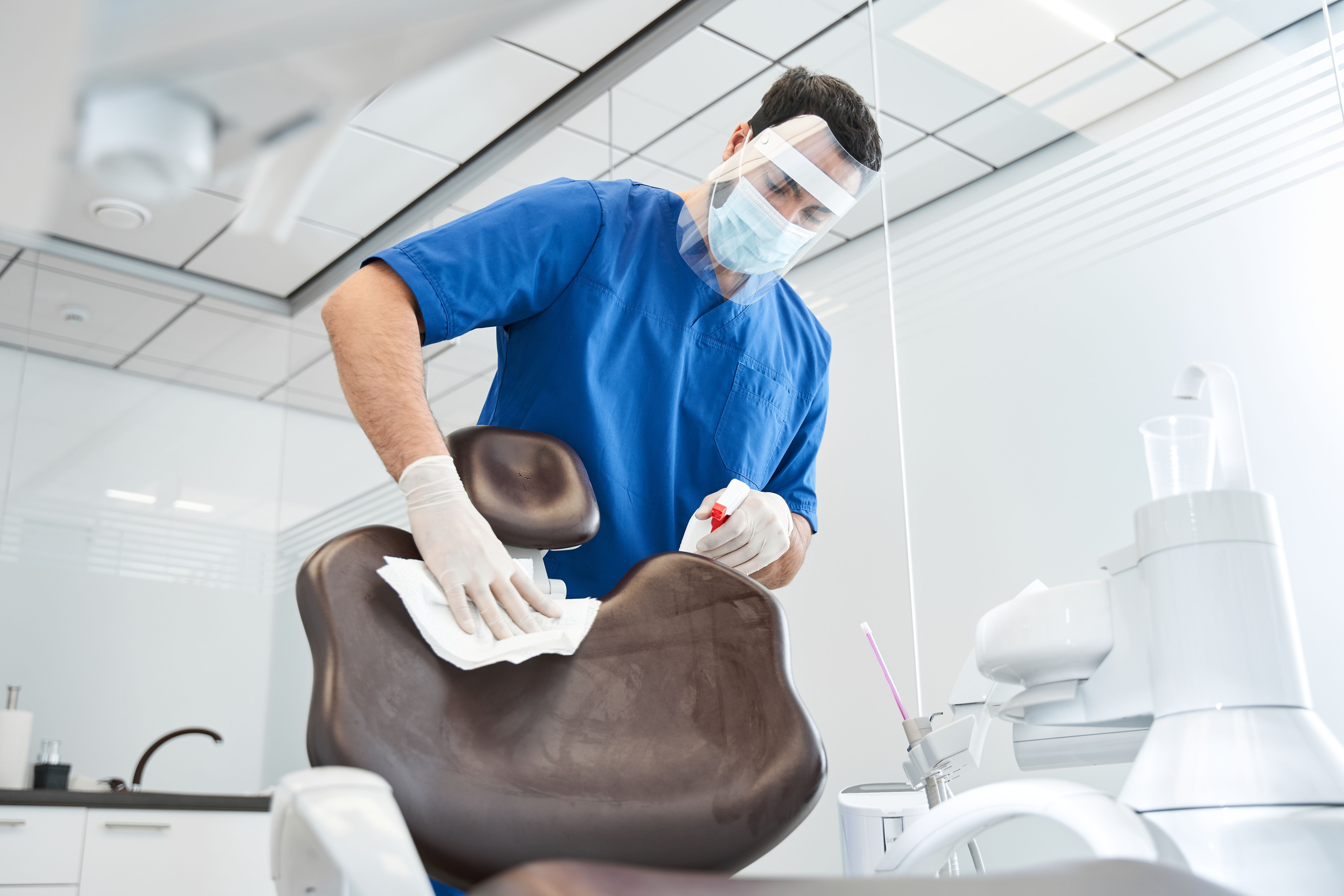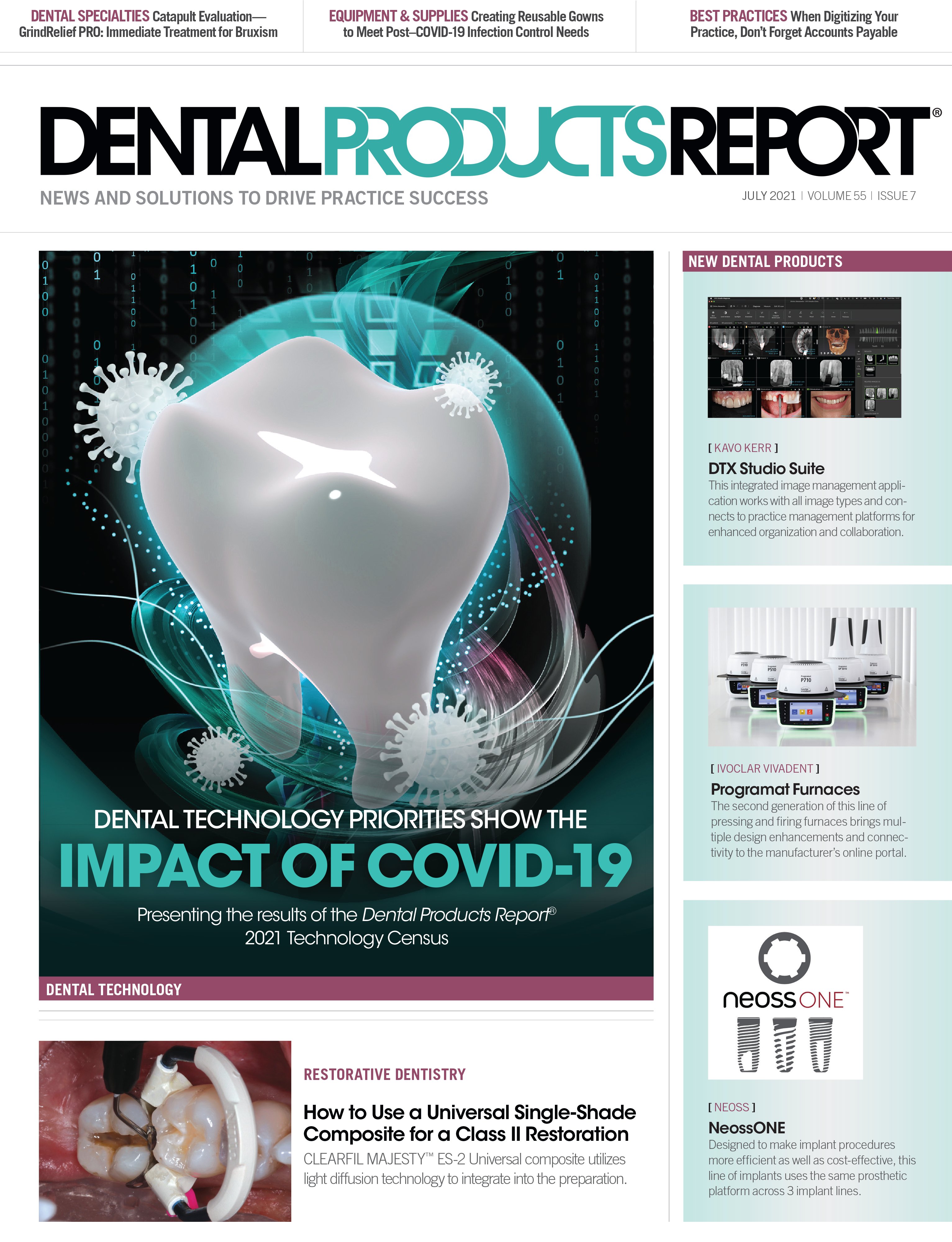Cleaning the Uncleanable: How to Reprocess Difficult Items
How to best sterilize items and equipment that prove difficult to clean the standard way.
by Yakobchuk / stock.adobe.com

The cornerstone of good infection control is ensuring that the practice, and the operational items within it, are clean, disinfected or sterilized when necessary.But, not every piece of equipment can fit into the sterilizer, and not every piece of equipment that can fit into the sterilizer can be exposed to those extreme temperatures. There are, of course, ways to ensure that those pieces of equipment are properly reprocessed, but there is a right way to do it.
Differences
The practice’s autoclave is the best tool to sterilize equipment, but not everything is appropriate for that method.
“It depends on the size of the item,” Dr Jonathan Rudin, DDS, MS, MPH, observes. Dr Rudin is a safety and infection control consultant at San Diego Healthcare Compliance. “Whatever can fit into the autoclave – and could be sterilized – should be sterilized. What about something like a dental chair? Obviously, it’s too big to put in the autoclave, but the chair doesn’t go intraorally anyway, so those kinds of things need to be disinfected as opposed to sterilized.
“Sterilization destroys or removes all microbial life from the object or material. Disinfection reduces the number of microbes, but doesn’t remove everything.”
In some cases, wipes or sprays may be appropriate (with keyboards, for instance). It may be optimal to prevent the surface from becoming contaminated in the first place. In such cases, a plastic barrier can be used.
“I always want people to cover everything and replace it in between each patient,” Dr Lisa Kane, DMD, Dental Consultant at Dental Office Compliance of New England says. “It doesn’t have to be anything fancy. It could be Saran wrap.”
It’s important to remember that the barrier must be replaced between patients.
“I see a lot of people putting barriers on and just leaving them on for the day,” Dr Kane says. “The barriers are designed to be one per patient. I tell everyone that anything that’s out in the open – like a curing lights, impression guns, x-ray machines – should be covered with something.”
Other items at the practice might technically be able to fit into the autoclave, but they shouldn’t be exposed to those temperatures. For instance, technology like tablets or intraoral cameras wouldn’t survive such a high-heat environment, but there are some strategies for keeping that technology safe and clean. The problem is that the product for disinfecting a dental practice may not be the recommended by the technology manufacturer, and vice versa.
“People are really trying to do consents, digitally,” Dr Kane says. “Some people have tablets that they give the patient and then they wipe down.”
One work around, she observes, is that most patients bring their own devices with them that they can sign without having to touch one at the office.There are programs that can make a lot of the paperwork digital.
“You can sit with them and review the consent form, and then they send it to the patient’s tablet or their phone, so there’s no, cross-contamination,” she says.
The medium
For purposes of disinfection, practices typically use disinfecting wipes or sprays. But which is best? It depends on the application.
“There are instances where sprays are more effective than wipes, and that’s with irregular surfaces,” Dr Rudin says. “For instance, spray is most effective when there’s an impression made of the teeth and it needs to be disinfected prior to sending it to the laboratory. The impression is not conducive to having a wipe moved over that surface. You can’t get into all the intricacies, whereas the spray, of course, can contact all the surfaces and disinfect it. Other times, people will disinfect blood pressure cuffs, and that’s because the blood pressure cuff is made of fabric, as opposed to a vinyl material, which would be more conducive to using the wipe.”
The type of product must be compatible with the surface on which it is to be used to avoid the potential for damage.
“If you get a disinfectant that’s compatible with your chair, you’re not going to ruin it,” Dr Kane says. “Something that has nooks and crannies, something that has holes, like the keyboard or the controls for some of the older chairs are not things that should be wiped down– unless you have a keyboard that you can shut off the functionality of and just wipe down.”
Barriers are best for cases where neither a spray nor wipe would be effective.
“Put a barrier on it, because you’re never going to get those clean,” she says. “Anything that you could ruin, potentially, by using a disinfectant, I would put a barrier on. However, if you do get something dirty around or underneath the barrier, you do have to disinfect that surface.”
Given the times, there may be an inclination to be overprotective, and patients may have a heightened sense of environmental conditions.
“You don’t have to put barriers on the light switches and on the armrests, as long as you’re disinfecting,” Dr Kane says. “I’ve heard of patients going in and asking, ‘Is that clean?’ People now are more aware than they were before, and I think they want to see barriers.
No matter which product team members use, it’s always necessary to protect oneself – by wearing gloves, proper respiratory protection, and all the rest of your PPE.
“Many of the disinfectants out there are not really okay for you to breathe in over extended periods of time.You have to review the SDS of your product to find out what PPE and what kind of ventilation you should have,” Dr Kane says. “I get it. Spray allows it to be in the air more. I like wipes or I like spraying on a towel and then wiping.”
The best product
The differentiation between products doesn’t just end at whether the disinfectant is sprayed or wiped on. Products offer different formulations that may, or may not, be appropriate for a given environment. There are a number of variables that must be taken into consideration when selecting a disinfectant.
“These are called intermediate level disinfectants,” Dr Rudin says. “Typically, they are EPA-approved, and I would first check with the manufacturer’s instructions to make sure it’s compatible, not only with a dental unit, which is the typical thing that gets disinfected, but if you have a very nice reception countertop, whether it’s made of some sort of granite or fine quartz material, that disinfectant can have a reaction with the material.
“The other consideration is the contact time,” he continues. “The first step is where the invisible grunge layer is removed from the surface. Think of a typical dental procedure where aerosols are generated. They settle over time on the vinyl chair. That material needs to be removed. The next pass, I would suggest the same material is used, so that that wet layer of chemical is left in place for the required contact or kill time. Some disinfectants have a very fast kill time; others take longer.”
“I try to stress in my classes to look at the instructions, look at the kill time, double check the new EPA List N for COVID, make sure that you’re leaving it wet for the amount of the kill time,” Dr Kane adds. “Some offices might not know what the kill time for their product is, and I think there’s also probably a lot of trying to conserve product. So, I would imagine that they’re spreading it thin and it probably doesn’t last for as long as it should.”
Regardless of which method is used for cleaning, the most important thing is choosing the best product for the practice’s equipment and furniture, and to follow the manufacturer’s instructions for use.
“It’s really important to make sure that everything in the operatory that is potentially contaminated – which is everything that’s out in the open – is covered, disinfected, and changed in between everyone,” Dr Kane says. “And if you can’t cover and change it, then you should put it away in a cabinet.”
